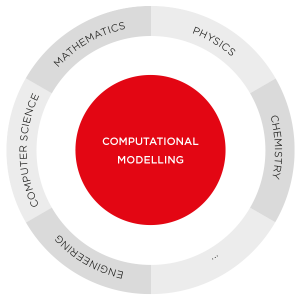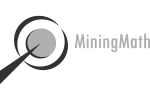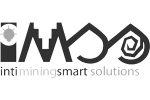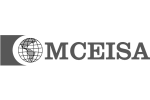Data Analytics
Mining is an industry with historically high revenues, but with lot of challenges to improve their operational processes within a very volatile market; mining companies have to react as quick as possible to these changes in the market altering their businesses to face these new challenges while maximising its value.
Recent advances in machine learning and data analytics in the mining industry have enabled miners to leverage data from sources within and beyond the value chain to provide informed decision support and insights about the probability of future events.
This is the reason for which R&O ANALYTICS provides solutions that are based on using the power of Data Science, using advanced planning & scheduling processes integrated to supply chain optimisation, and business analytics processes, to supports better informed decision making.
At R&O ANALYTICS we provide a range of Data Science specialist services to mining resource industries. The services we provide to the mining industry are:
Data Analysis & Data Mining

Data analysis is the process of extracting, compiling, inspecting, cleaning, transforming, and modelling raw data for purposes of discovering and obtaining useful information, that can be applied to formulating informed conclusions, and supporting decision-making.
Data mining is a particular data analysis technique that focuses on the extraction and modelling of hidden predictive information from large databases; rather than purely descriptive purposes. Data mining is a powerful new technology with great potential to help mining companies focus on the most important information in their data warehouses.
Data visualisation involves the creation and study of the visual representation of data, meaning “information that has been abstracted in some schematic form, including attributes or variables for the units of information. A primary goal of data visualisation is to communicate information clearly and efficiently to users via the statistical graphics, plots, information graphics, tables, and charts selected.
Computational Modelling
 Computational modelling is the use of mathematics, physics and computer science to study the behaviour of complex systems by computer simulation. In mining (and other industries) conceptual and theoretical modelling constructs are expressed as sets of algorithms/processes and implemented as software engines.
Computational modelling is the use of mathematics, physics and computer science to study the behaviour of complex systems by computer simulation. In mining (and other industries) conceptual and theoretical modelling constructs are expressed as sets of algorithms/processes and implemented as software engines.
The modelling software engines, if adequately described for human understanding and machine processing, can become objects in digital library collections where they can be found and used in applications without the direct involvement of the creator.
A computational model requires extensive computational resources to study the behaviour of a complex system by computer simulation and contains numerous variables that characterise the system being studied.
Computational models are created to simulate a set of processes observed in the natural world in order to gain an understanding of these processes and to predict the outcome of natural (geological, processing, mining and economics) processes given a specific set of input parameters.
Predictive Modelling

Mining businesses need to have as much knowledge as possible about what can happen in the future. Knowing possible outcomes can help businesses to make better informed decisions and be prepared for possible future events.
Predictive modelling is a process used in predictive analytics to create a statistical model of future behaviour. Predictive analytics is the area of data mining concerned with forecasting probabilities and trends.
Predictive modelling leverages statistics to predict outcomes most often the event one wants to predict is in the future, but predictive modelling can be applied to any type of unknown event, regardless of when it occurred.
Depending on definitional boundaries, predictive modelling is synonymous with, the field of machine learning, as it is more commonly referred to in academic or research and development contexts.
Scientific Computation
Scientific computation is a rapidly growing multidisciplinary field that uses advanced computing capabilities to understand and solve complex problems. Scientific computation is different from theory and laboratory experiment which are the traditional forms of science and engineering. The scientific computing approach is to gain understanding, mainly through the analysis of mathematical models implemented on computers.
Scientific computation investigates the flexibility and power of project-oriented computational analysis (e.g., in mining), and enhance communication of information by creating visual representations of the data available. It is based on practice and advanced algorithms to resolve complicated problems in a range of fields including the physical and engineering sciences, finance and economics.
Scientific computation refers to the use of computers, networks, storage devices, software, and algorithms to solve problems, do simulations, build things, or create new knowledge. It can be viewed as the intersection of:
-
Computing and networking hardware
-
Algorithms, Numerical Analysis, and Mathematics
-
Software, Programming, and Databases
-
Discipline specific knowledge (e.g., mining and petroleum)
Case Study
Mechanical availability (hours per year) and utilisation are two important key operational indicators used by mine planners when planning and designing a mine operation and when controlling and monitoring total material movement (ore + waste) throughout the life of mine (LOM) of a mine operation; normally, in an open pit mine operation the total material movement system is composed of a combination of trucks- shovels system and semi-automatised conveyor system, which are normally considered with initial estimate of these operational indicators; e.g., 95% availability and 90% utilisation.
However, defects can occur in machines during their operation, causing delays, and additional cost for the mining company and other negative effects. It is not surprising that enterprises were continuously investing in new maintenance technologies that were more economical and efficient. Breakdown maintenance (or reactive maintenance) is the traditional reparation technique, focused on fixing failures that have already occurred. Preventive maintenance uses scheduling to replace parts on a regular basis, and proactive maintenance aims to reduce the number of errors by always tracking failures to their root causes and fixing them. However, these methods are expensive and not always efficient.
In this case the mine was operating for some years and there was data about the operational indicators (availability and utilisation) of both the truck-shovel system and the conveyor system.
After downloading the data, it was classified as data for model training and data for model validation—a standard procedure in machine learning.
-
Exploring the Data;
-
Analysing the Data;
-
System model generation;
-
Training the model to generate reasonable predictions, using supervised machine learning;
-
Feature extraction to turn raw data into information;
-
Feature selection to select those features that are most relevant for the modelling problem;
-
Optimise the Model;
-
Deploy analytics to the production system.
Partnering With
Phone: +61 7 3077 7003 | Fax: +61 7 3378 6034 | Email: contact@randoanalytics.com



